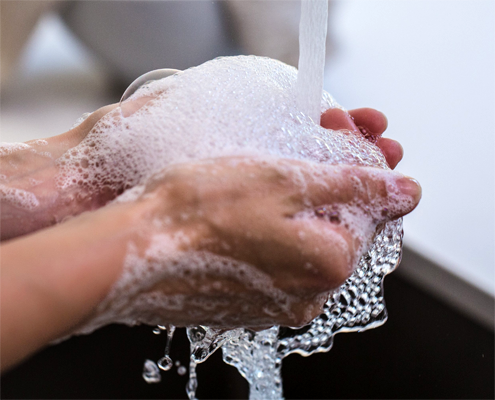What’s the big deal about foam in cleaning and personal care products?
Dr Rajesh Lalloo, Chief Technical Officer, OptimusBio
The consumer perceptions of foam in cleaning products is an interesting psychological phenomenon based on history and programming through advertising. In general, more foam means better cleaning, but is this perception true?
Historically, detergents were caustic based and the soapiness and foaminess of the detergent was an indication of strength. These cheap and nasty cleaners were super strong, and you may recall the caustic effect on the skin and hands and those shriveled fingers and toes, from spending too much time in a soapy bath. During this time, the notion of more foam equals stronger cleaning was born.
With improvements in technology and a move to safer and alternate ingredients, cleaning suppliers could not just take away the foam. That would have been too much of an adjustment to the deeply entrenched consumer perception. So, they introduced artificial foaming agents and bombarded consumers with the luxurious connotations of foam, especially in bath soaps advertised on television in the 80s and 90s. Some of these foaming agents can have a dehydrating effect on the skin, which opened an excellent market in aqueous body moisturizers. Generally, more foam equals harsher effects on the skin, as the “good for you” essential moisturizing oils in a product, will cause the foam to break. Knowing this, do children’s bubble baths make any sense? The predominantly palm-oil based foaming agents, used in moderation are however acceptable within reason, if sourced from RSPO member suppliers, but less means less foam, so there is always a tendency to add excessive amounts to maintain customer acceptance. We can do with moderate amounts of foam, because some of the functions that foam serves it to change the surface tension and lift dirt into the foam layer. This is only necessary in non-porous vertical surfaces, like a car wash for example, where the foam offers some cling and residence time for the cleaner on the smooth surface of a car. It also serves as an indicator, so you know if you’ve missed a spot. Do you think this is necessary on your skin or on a horizontal surface such as a kitchen top?
If we move forward to the current technology trends, modern surfactants and detergents are now readily biodegradable to OECD 301 standards. This means that the components are mostly broken down within 28 days and unlikely to cause any downstream negative environmental impact. These ingredients also perform better (which means we can use less), they are less harmful to people and animals and do not leave a soapy residue, so we can rinse with a lot less water. Don’t get me wrong, they do foam moderately to satisfy all the positive attributes of foam, but the foam is thinner and breaks quickly to prevent any negative downstream effects. Today, we can extend this technology to completely waterless products that require no rinsing at all, and guess what, NO FOAM!
Some additional problems associated with excessive foaming is the damage to pumps in dishwashers and washing machines. Interestingly, there is some really heavy-duty cleaning taking place here, but all the detergents are low foaming. Does this maybe answer your question as to whether foaming is actually related to cleaning efficiency? If you have a grey water treatment system, the foaming will also cause problems with the water treatment and who wants to see foamy water being directed into your prized organic garden from one of these systems.
The part that you don’t see, is the problems that foaming and bulking causes in municipal waste water treatment plants. This interferes with the water treatment process negatively, resulting in incomplete treatment, so the wastes outflow into natural environments.
Have you explored the paradox of why you would like to see a foam-filled sink of dishes at home, but will not allow your children to play in a foam infested rock-pool along a river or during your sea-side holiday? Get where I’m going with this? It’s all about perceptions from programming by decades of advertising. Sadly, this perception affects mostly the poorest of the poor, because historically the only affordable cleaning possibilities were the strong and harsh detergents, that guess what; foamed like crazy. The unintended consequences are environmental damage to natural rural areas and dysfunctional ablution facilities such as pit latrines and septic tanks. So, the next time your cleaner tells you a product does not work, because it does not foam, you need to understand why and offer the necessary support and education. Sadly, these old school cleaning products are still readily available at very attractive prices and offer plenty of foam, so the most affluent of consumers are not spared the temptation of these cheap buying choices. With today’s technology, “less is more” so use the minimum product for the job, switch to authentic green certified products and say good bye to your obsession with excessive foam.
With today’s technology, “less is more” so use the minimum product for the job, switch to authentic green certified products and say good bye to your obsession with excessive foam.




